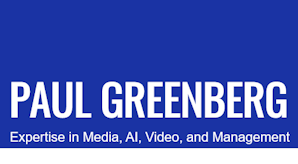
Three Critical Changes Businesses Need To Manage
Today, we are seeing unprecedented, rapid changes in — among other things — technology, audience demographics, and the competitive landscape. These three elements in particular are causing upheaval across almost every industry. Combating them and thriving in the face of them takes strategic preparation, fortitude and hard work. Change is obviously natural and unavoidable, and the only way to react is to prepare for it, act on it and always keep a continued cycle of that preparation and action. Jeff Bezos says that Amazon intentionally ships products that are 70% finished; he reasons that if you want until it’s 90% done, you’re already too late. You can always iterate and improve.
1. Technology
Some of the changes taking place in this realm are apparent and obvious: smartphones allow us to connect to any information and any human at any time and have destroyed or replaced everything from books and flashlights to Rolodexes and thermostats. However, less obvious, more arcane, and yet potentially more important changes are those in (a) artificial intelligence (including deep neural nets and machine learning), (b) the blockchain, and (c) quantum computing that are roiling the culture. Because of their tremendous potential to uproot multiple industries in one fell swoop, these technologies need to be intergrated into businesses’ core strategies right now.
Every company needs to have an AI strategy, since we now interact with it every day, be it through using a voice assistant; depositing checks by taking a picture of them with your smartphone; having Google Photos recognize the faces of your friends in all your stored pictures; or watching a movie that Netflix has chosen specifically for you. A few weeks ago, Google’s AI subsidiary DeepMind unveiled the latest version of its Go-playing software, AlphaGo Zero. The new program is a significantly better player than the version that beat the game’s world champion earlier this year, but, more importantly, it’s also entirely self-taught.
The blockchain has deep implications far beyond just cryptocurrency and Bitcoin. As a decentralized and transparent digital ledger, blockchains’ records can’t be altered retroactively and would-be middlemen are cut out (e.g., the bank in a financial transaction; a government in a real estate deal; even potentially the court system in a legal agreement.) To take advantage of it, Dubai is creating new decentralized identity system to replace passports; MIT has started issuing some diplomas via a Bitcoin blockchain; Wal-mart has filed a patent for a system that uses blockchain technology to track packages delivered by unmanned drones; and live-streaming company YouNow has developed a new app that will be fueled by crypto-tokens minted on Ethereum. (Of course, complicating matters even further is the fact that technology advances like the Hashgraph already threaten to make the blockchain obsolete at some point.)
Elsewhere, quantum computing is accelerating faster than anyone expected. Quantum computers can perform the same tasks in parallel that traditional computers perform in serial, dramatically increasing speed and processing power. Recently, IBM showed a working simulation of a 56-qubit (or quantum bit) computer on a traditional computer, which surpassed the threshold of 49 qubits everyone thought was the absolute limit.
All of these technologies have implications across many industries, and media is no different. As platforms like Facebook, YouTube and Snapchat diverge in terms of their user experience, audiences watch video very differently in different places. Therefore, content producers need to consider the distribution of their content from the very inception of their creative idea. It’s no longer one size fits all where people can produce once and distribute everywhere.
For example, on Facebook, square videos work best in the news feed. Since users are scrolling through their feed quickly, it’s imperative to make the first three seconds of each video extremely compelling. Additionally, because 85% of Facebook videos are played without sound, most need captions. Having said that, horizontal videos work better on Facebook’s Watch tab or in their over-the-top apps. Square videos are the default on Instagram. On YouTube, horizontal is the default, but vertical videos will now play. Snapchat drove the prevalence of vertical video and has stuck with that format.
On the content side, the difference between what works and what doesn’t is fascinating and sometimes stark, even in the same genre. For example, automotive content about eco-friendly cars works better on Facebook, while the YouTube audience is more interested in automotive videos about self-driving vehicles.
2. Audience Demographics
Populations are shifting under our noses. Everyone talks about how important it is to market to Millennials. In fact, it turns out that Millennials (people aged 20-37) are now only the second largest marketing cohort, making up 24.5% of the population. Number 1? Generation Z, Millennials’ successors who are now 19 and under. They are almost 26% of the population. Don’t be fooled by their young age, either: Gen Z is estimated to have over $44 billion of purchasing power. This is just the beginning of the rush to reach the first natively digital generation, and it’s confounding previous marketing efforts. Among Gen Z’s very different characteristics:
- Their attention span averages 8 seconds, compared to 17 seconds for Millennials.
- They use 5 screens to communicate and consume entertainment, compared to just 2 for Millennials.
- 76% wish their hobbies would turn into their jobs, compared to 50% of Millennials.
- 60% of them want to have an impact on the world, compared to 39% of Millennials.
Businesses must be very cognizant of these characteristics and allow critical changes to flourish in their organizations to be able to communicate with this new group of consumers. These changes include but are not limited to:
- New marketing tactics (having a truly authentic, organic voice about what your company stands for and how it will integrate into their lives)
- Extensive use of social networks
- Re-design of products
- Different types of content
- An overall philosophical shift to align with Gen Z (more altruistic and truly respectful of their needs)
3. Competitive Landscape
There is an almost frictionless ability today for new competitors to enter the market and existing competitors to introduce new products. This can of course dramatically affect your market share and your relationship with your customers and force yet another rapid strategic pivot. To that end, it’s essential to understand creating barriers to entry — what Warren Buffett calls a “moat” around a business. There are only five TRUE barriers to entry:
- Fixed Costs: Companies can scale without increasing their marginal cost (e.g., cable service providers/ISPs).
- Network Effects: Customers are locked in because they have created connections that would be hard to replicate (social networks).
- Switching Costs: Users are locked in because they have stored a tremendous amount of information with the company that would be difficult to move (email providers).
- Proprietary Processes and/or Technology: These provide tremendous efficiencies and economies.
- Patents
There are false prophets of competitive advantage — things that may seem to give you an edge but really don’t. Brand is not a true barrier to entry. The concept of brand is ephemeral, and unless companies continue to come out with strong offerings on a regular basis and win on one or more of the above six elements, they will fade into obscurity. First-Mover Advantage (or being the first company in a new market) is not a barrier to entry: Remember Friendster, the first social network? Other factors that appear to be true advantages but are not are Funding: There’s always someone with more money (or willing to spend more money) and Personnel: Employees move around quickly and often; companies need to be able to move on no matter who is in place.
In conclusion…
All of these innovations and market pressures over which you have little or no control can be terribly intimidating. As the world changes and we grapple with the fleeting advantages our businesses might have, companies need to pivot quickly, which can lead to disruption in multiple areas, particularly management tactics, staff makeup, organizational hierarchies, processes, customer interactions, and financial and funding choices. The critical part is to examine all of these areas (and any others that might pertain specifically to your field) and then boldly create a new strategic plan that takes these areas into account.
Abraham Lincoln gave a speech in 1859 in Wisconsin where he reflected on the adage “This too shall pass away.” In response, the great leader said, “How much this thought expresses! How chastening in the hour of pride! How consoling in the depths of affliction! And yet let us hope it is not quite true. Let us hope that we shall secure an individual, social, and political prosperity and happiness, whose course shall be onward and upward, and which shall not pass away.”
Please see my follow-up post: Three Essential Ways To Manage People Through Change. Thank you.

